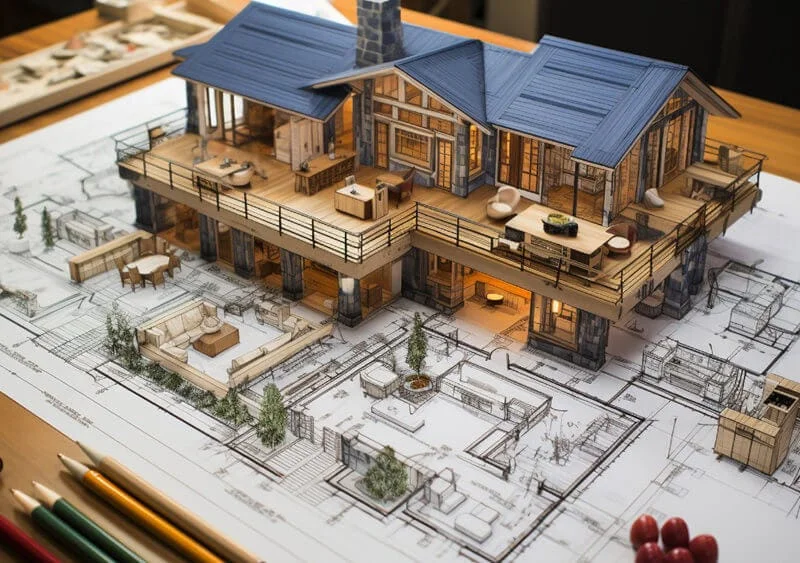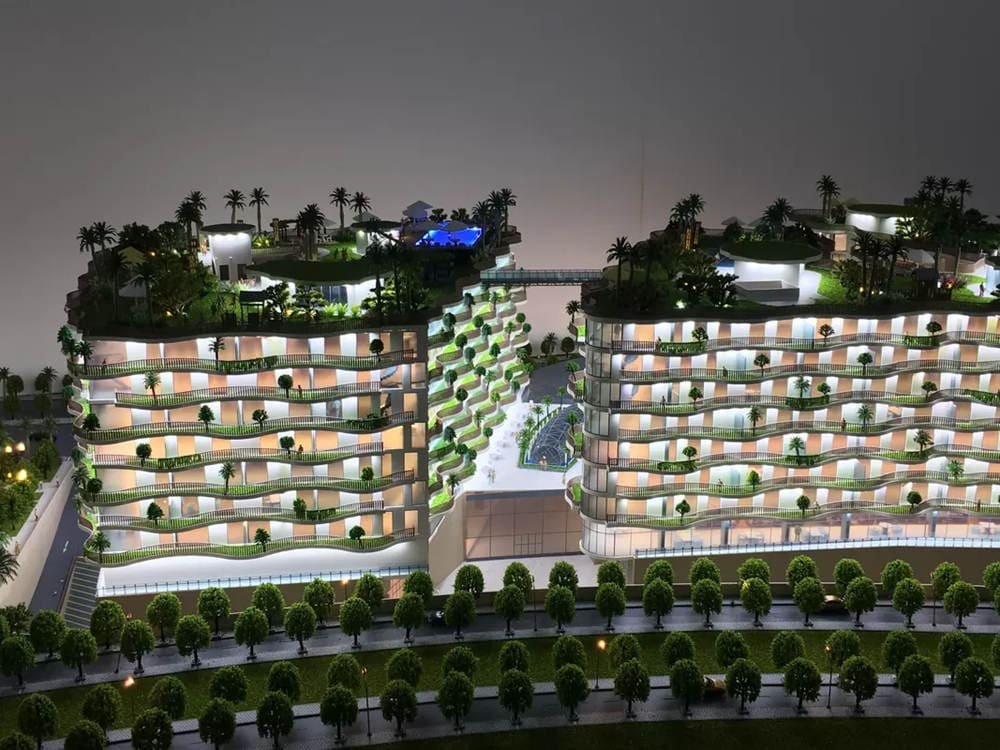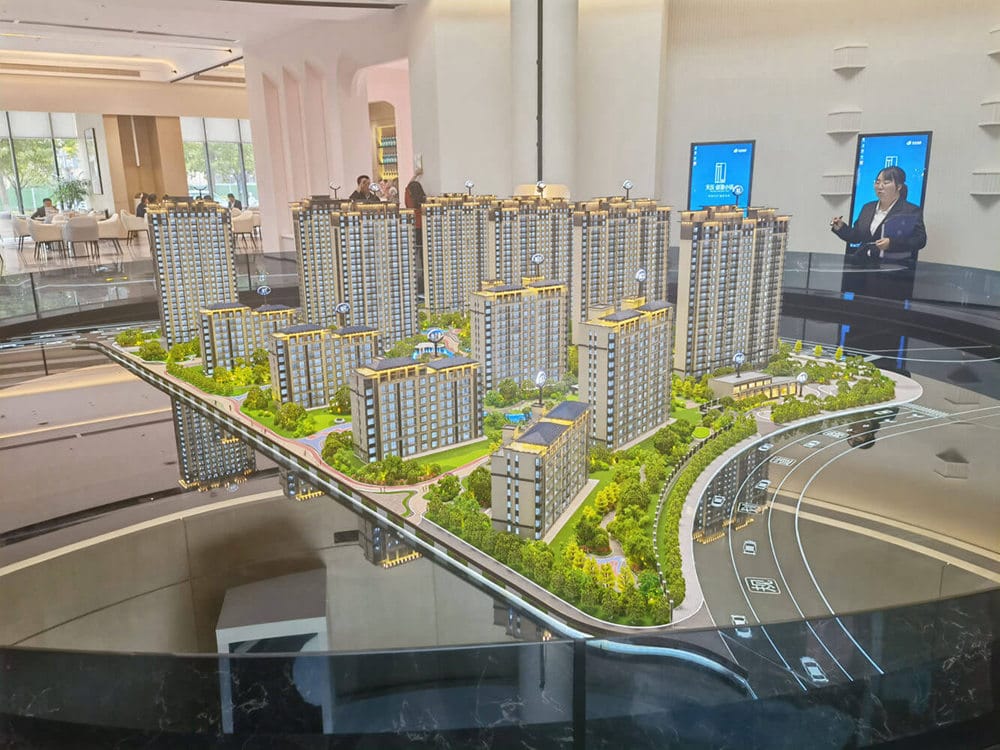У Архітектурна модель, Вибір правильного матеріалу є критичним, стратегічне рішення, яке впливає на кожен аспект кінцевого продукту. Це виходить далеко за рамки простої естетики; це має вирішальне значення для досягнення бажаного результату на кожному етапі процесу проектування. З Концептуальні моделі використання доступних матеріалів, таких як пінопластова дошка і картон до Презентаційні моделі вимагають більш витончених параметрів, як-от акрил і деревина, впливає вибір матеріалу міцність, точність, і естетична привабливість. Все частіше, Екологічно чисті матеріали як перероблена пластмаса і біорозкладні піни набирають обертів для екологічних дизайнів. Розуміння того, як поводитися, вирізати, і скріпіть ці матеріали, разом із уникненням типових помилок, допоможе підняти ваші моделі. Експериментування та гнучкість із матеріалами можуть покращити обидва дизайнерська експресія і якість моделі. Цей посібник надасть експертну інформацію, необхідну для прийняття обґрунтованого вибору для вашого наступного проекту.
Зміст
Важливість вибору матеріалу в архітектурних моделях
Матеріали: Основа кожної архітектурної моделі
Якщо говорити про архітектурні моделі, матеріали — це набагато більше, ніж просто «матеріал», з якого можна будувати. Вони неоспівані герої процесу проектування, формування того, як сприймається концепція, зрозумів, і досвідчений. Відповідний матеріал може перетворити простий ескіз на відчутний витвір мистецтва, виявляючи душу дизайну та допомагаючи йому вискочити зі сторінки (або екран, або креслярський стіл) і в реальний світ. Без належних матеріалів, навіть найгеніальніші архітектурні ідеї можуть провалитися, як спроба побудувати будинок на фундаменті із сипучих пісків. Це основна тема, яку ми представляємо на нашій основній сторінці, Кінцевий посібник з архітектурних моделей високого класу.
Чому вибір матеріалу важливий? добре, уявіть, що ви намагаєтеся передати витонченість, сучасні лінії багатоповерхівки з чимось, що виглядає та відчувається як картон. Не зовсім те повідомлення, на яке ви прагнете, право? Матеріали не просто представляють фізичні характеристики будівлі, вони допомагають виразити її масштаб, форма, текстура, і задум дизайну за конструкцією. Матеріали втілюють ваше бачення в життя та допомагають іншим зрозуміти мрію, яку ви намагаєтеся донести.
Правильні матеріали також можуть визначити настрій і емоція вашої моделі. Незалежно від того, чи використовуєте ви гладкий, прозоре акрилове покриття для передачі сучасності чи землистості, природне відчуття деревини, щоб викликати тепло та довговічність, кожен вибір матеріалу посилає повідомлення про дизайн. І поза естетикою, матеріали також відіграють вирішальну роль у функціональності, допомагаючи випробувати структурні ідеї, продемонструвати пропорції, і переконайтеся, що кінцевий продукт такий же міцний, як і бачення, що стоїть за ним.
Мета статті: Ваш найкращий посібник із вибору матеріалу
Так, чому ми тут сьогодні говоримо про архітектурні модельні матеріали? Відповідь проста: вибір відповідного матеріалу подібний до вибору правильної палітри кольорів для картини. Уся справа в передачі правильного повідомлення, у правильний спосіб, в потрібний час. Незалежно від того, чи працюєте ви над a Концептуальна модель який перевіряє нові ідеї або a остаточна модель презентації які будуть використовуватися для залучення клієнтів, обрані вами матеріали безпосередньо впливатимуть на сприйняття вашого дизайну.
У цій статті, ми допоможемо провести вас через лабіринт матеріалів, доступних для створення архітектурних моделей. Ви дізнаєтеся, які матеріали найкраще підходять для різних етапів процесу проектування, від ранніх концептуальних ескізів до вишуканих, докладні презентації. По дорозі, ми вивчимо переваги та недоліки різних матеріалів — незалежно від того, чого ви прагнете економічно ефективним, міцний, або Візуально приголомшливий.
Поки ви закінчите читати, ви матимете чітке розуміння того, як вибрати ідеальні матеріали на основі конкретних потреб вашого проекту, чи це для дослідження дизайну, залучення клієнтів, або підсумкова презентація. Готовий зануритися? Давайте почнемо!
Ключові фактори, які слід враховувати під час вибору матеріалів для архітектурних моделей
Стадія проекту: Від концепції до реальності
Вибір правильного матеріалу для вашої архітектурної моделі — це як вибір правильного вбрання для великої події — все залежить від події. Етап вашого проекту визначає, чи потрібно вам щось швидке та концептуальне чи те, що може витримати пильну увагу в світлі уваги.
Для Концептуальна модель, ви не обов’язково шукаєте ідеальну обробку — ви досліджуєте базові форми, обсяг, і просторові стосунки. Пінопластові плити, картон, і папір ваші основні матеріали тут — легкі, недорогий, і легко маніпулювати. Ідея полягає в тому, щоб пояснити концепцію, не зациклюйтеся на дрібних деталях.
Але коли ви переїжджаєте робочі моделі, де дизайн більш вишуканий і потребує перевірки функціональності та пропорційності, матеріалів потрібно посилити. Подумайте липа, бальзове дерево, і акрил. Ці матеріали ідеально підходять для більш складних деталей і забезпечують довговічність, необхідну для тестування, не жертвуючи надто великим часом або коштами.
Тоді, є остаточна модель презентації. Саме тут ваш дизайн буде продемонстрований у всій своїй красі, тому він має сяяти. Це актив, який вам допоможе подвоїти ваші продажі. Такі матеріали акрил, смола, або метал ідеально підходять для цього етапу. Вам потрібна точність, чиста обробка, і довговічність, яка витримує транспортування, а також забезпечує фактор «вау», коли він потрапляє на зал засідань або демонстраційний стіл.
Бюджетні обмеження: Здійснення мрій за бюджет
Ах, вічна дилема кожного архітектора: намагаючись втілити своє бачення в життя, не розбиваючи грошей. Бюджетні обмеження є важливим фактором при виборі матеріалів. Якщо ви працюєте над a Концептуальна модель, бюджет може бути обмеженим — і це нормально! Такі матеріали картон, пінопластова дошка, і папір є доступними та універсальними, ідеально підходить для мозкового штурму та швидких ескізів. Ці матеріали справляються зі своєю роботою без великої ціни.
Коли ви потрапляєте в більше детальні або робочі моделі, витрати можуть почати зростати, особливо при використанні високоякісних матеріалів, таких як деревина, смола, або акрил. Ці матеріали забезпечують більш складні деталі та довговічність. Хитрість тут полягає в балансі функціональність з економічна ефективність—використовуйте дорожчі матеріали там, де вони важливіші, і вибирайте бюджетні варіанти, де вони не будуть зіркою шоу. Для глибокого занурення в цю тему, наш путівник по з 5 Ключові фактори ціноутворення архітектурної моделі обов'язкове читання.
Для масштабних або довгострокових проектів, планування є ключовим. Перероблені матеріали може бути екологічно чистим (і економічно ефективним) вибір. Такі матеріали відновлена деревина або перероблена пластмаса може забезпечити міцність і довговічність без роздування вашого бюджету. Іноді, справа не лише в обраних вами матеріалах, але наскільки творчо ви можете їх використовувати.
Вимоги до часу: Гонки з годинником
Час — це гроші, особливо у світі створення архітектурних моделей. Швидкість виготовлення моделі безпосередньо впливає на обрані вами матеріали. Якщо ви перебуваєте в стиснення часу і потрібно a Концептуальна модель швидко, використовуйте матеріали, якими легко маніпулювати та які потребують мінімальних зусиль для складання. Такі матеріали картон, пінопластова дошка, або папір дозволить вам вибити грубі ідеї, не занурюючись у деталі. Основна увага приділяється швидкості, не досконалість.
Для більшого детальні моделі або Презентаційні моделі, час, ймовірно, довший, і ось де акрил, деревина, або смола вступати в гру. Для роботи з цими матеріалами потрібно більше часу, спеціально для шліфування, різання, і закінчення, але результатом є модель, яка витримує перевірку. В даному випадку, витрачений час вартий додаткової міцності та візуального ефекту. Такі технології, як Лазерне різання і 3D друк може допомогти прискорити процеси, особливо коли йдеться про точні вирізи чи складні деталі.
Намір дизайну: Яка велика ідея?
Яка історія вашого дизайну?? Це футуристичний хмарочос з витонченими скляними фасадами, або сільський сільський котедж з фактурними дерев’яними балками? Вибрані вами матеріали повинні відображати ваші задум дизайну і чітко передати цю суть. Якщо ви розробляєте модель з акцентом на сучасна естетика, матеріали, як акрил або скло допоможе передати витонченість, поліроване покриття, і прозорість. Для дизайнів, які спрямовані на теплота і приземленість, матеріали, як деревина, пробка, або бамбук може додати природного відчуття, яке відображає загальну атмосферу, до якої ви прагнете.
Не забувайте про масштаб і пропорція моделі. Такі матеріали пінопластова дошка може допомогти швидко проілюструвати об’єм і об’єм, тоді як більш вишукані матеріали, як липа або метал ідеально підходять для підкреслення архітектурних деталей. Як ми обговорюємо в нашому посібнику Пошук ідеального балансу масштабу та деталей, текстура і товщина матеріалу повинні відповідати обраному масштабу. Вибрані вами матеріали допоможуть зробити історію дизайну зрозумілішою та ефектнішою, дозволяючи моделі повідомити ваші ідеї ще до того, як хтось прочитає бриф.
Довговічність і стабільність: Випробування часом
Тепер ви доклали всіх зусиль, щоб створити модель, ти хочеш, щоб це тривало. Важлива довговічність, особливо коли транспортуватимуть моделі, відображається, або обробляється кількома людьми. Деякі матеріали довговічніші за інші. Якщо ваша модель потребує постійного поводження, обов’язково використовуйте міцні матеріали, які витримують знос.
Акрил, деревина, і метал забезпечують чудову довговічність і добре тримаються протягом тривалого часу. смола і пінопластова дошка, З іншого боку, кращі для короткочасного використання або моделі, які залишатимуться нерухомими. Якщо ваша модель демонструється на відкритому повітрі або в зоні зі змінними температурами, ви захочете вибрати матеріали, які не схильні до деформації або пошкодження. Довговічність особливо важлива, якщо вашу модель потрібно транспортувати, процес, який ми розглядаємо в нашому Посібник з пакування та транспортування моделей.
Це також важливо враховувати екологічні фактори. Вплив сонячного світла може з часом потьмяніти певним матеріалам, тож якщо ваша модель буде демонструватися в яскравій кімнаті або під прямим освітленням, ви захочете вибрати такі матеріали, як акрил або метал які не погіршаться та не знебарвляться. Довговічність вашої моделі впливає на те, наскільки добре вона може витримувати навантаження під час використання за призначенням, тому вибирайте з розумом.
| Фактор | Що слід враховувати | Найкращі матеріали для роботи |
|---|---|---|
| Стадія проекту | Концептуальний, робочий, або презентаційні моделі вимагають різного рівня деталізації. | Концептуальний: Пінопластова дошка, картон, папір; Працює: Деревина, смола; Презентація: Акрил, метал |
| Бюджетні обмеження | Залишайтеся в межах бюджету, досягаючи бажаної якості та деталей. | Доступна ціна: Картон, піна; Середній діапазон: Деревина, акрил; Високого класу: Метал, смола |
| Вимоги до часу | Швидкість виробництва впливає на вибір матеріалу — швидші моделі використовують легші, більш прості матеріали. | Швидкі моделі: Картон, піна; Деталізовані моделі: Акрил, деревина, смола |
| Намір дизайну | Вибирайте матеріали, які відображають естетичні та емоційні якості дизайну. | Сучасний: Акрил, скло; Природні: Деревина, пробка, бамбук |
| Довговічність & Стабільність | Переконайтеся, що матеріали витримують обробку та такі фактори навколишнього середовища, як світло та температура. | Довговічний: Акрил, деревина, метал; Короткострокові: смола, піна |
Вибір правильних матеріалів для вашої архітектурної моделі схожий на пошук ідеальних частин головоломки — усі вони мають підходити разом. З урахуванням стадії проекту, бюджет, час, задум дизайну, і довговічність, ви можете створити модель, яка не тільки виглядає вражаюче, але й ефективно передає ваші ідеї. Незалежно від того, чи створюєте ви швидкий прототип, чи захоплюючу презентацію, обрані вами матеріали відіграватимуть головну роль в успіху вашої моделі.
Загальні матеріали, що використовуються в архітектурних моделях
Традиційні матеріали: Класика
Паперовий: MVP концептуальних моделей
Якщо ви тільки починаєте працювати над новим дизайном і вам потрібно швидко розробити концепцію, папір твій найкращий друг. Дешевий, універсальний, і готовий до дії, Папір ідеально підходить для ранніх етапів проектування, коли ви все ще тестуєте форми. Потрібно скласти, крива, або створіть божевільний абстрактний дизайн? Папір може впоратися з цим без жодних потовиділень.
- Переваги: Недорого, гнучкий, і простий у використанні з основними інструментами.
- Недоліки: Крихкий і не витривалий для тривалого використання.
- Найкраще використання: Швидке прототипування, дизайнерські експерименти на ранній стадії, і тестування масування перед тим, як використовувати дорогі матеріали.
Деревина (Бальса, Бассуд): Легкий, І все ж могутній
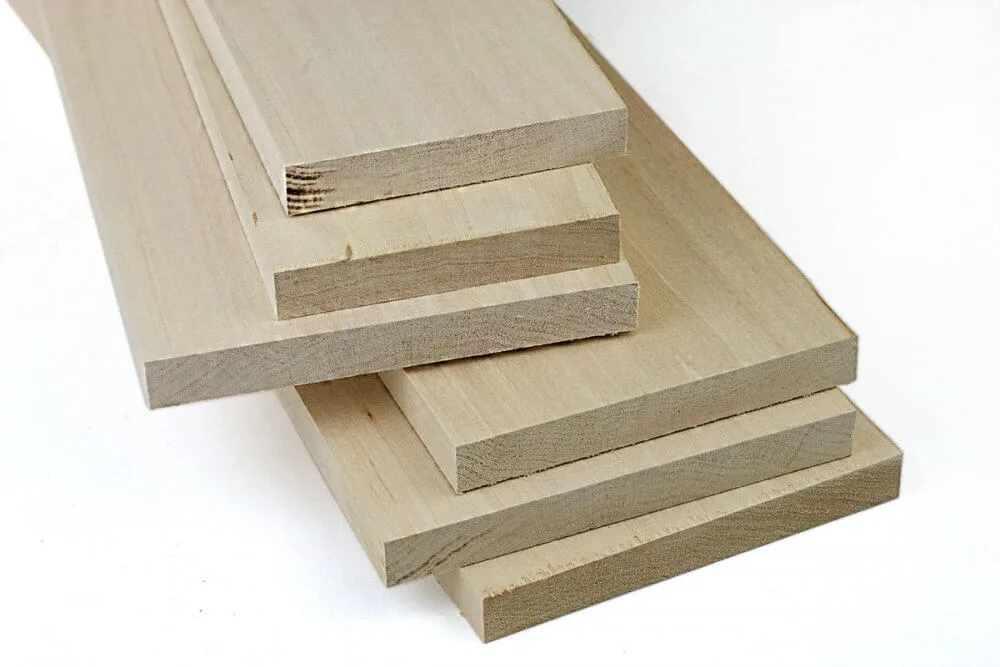
Коли мова йде про архітектурні моделі, які потребують обох сила і деталь, деревина це надійний вибір. Бальса і липа є двома найпопулярнішими варіантами створення точного, структурні елементи. Ці ліси світлі, Легко вирізати, і може бути відшліфована до ідеальності, що робить їх ідеальними для таких складних конструкцій, як двері, вікна, і обрамлення. Вибір між цими традиційними матеріалами та новішими методами досліджено в нашому посібнику Сучасне ремесло vs. Традиційна ручна робота.
- Переваги: Легко ріжеться, міцний, незважаючи на легкість, і має тонку текстуру для детальних поверхонь.
- Недоліки: Може бути дорогим для великих моделей і може відколотися або розколотися, якщо не поводитися належним чином.
- Найкраще використання: Детальні архітектурні особливості (вікна, двері, молдинги) і структурні компоненти в моделях, які потребують додаткової міцності.
Картон/ДСП: Робоча конячка
Картон (або ДСП) може не мати блиску блискучого акрилу, але це перевірений і справжній фаворит для виробників архітектурних моделей з обмеженим бюджетом. Легкий, легко працювати, і недорого, картон часто є матеріалом вибору для початкових моделей і масових досліджень.
- Переваги: Економічно вигідний, легко працювати, і універсальний за товщиною та обробкою.
- Недоліки: Не будується на довгі відстані; він може бути неміцним і може зігнутися або деформуватися з часом, якщо його не зміцнити.
- Найкраще використання: Основні моделі масування, дороги, пейзаж, і масштабні компоненти контексту.
пробка: Текстурний дотик
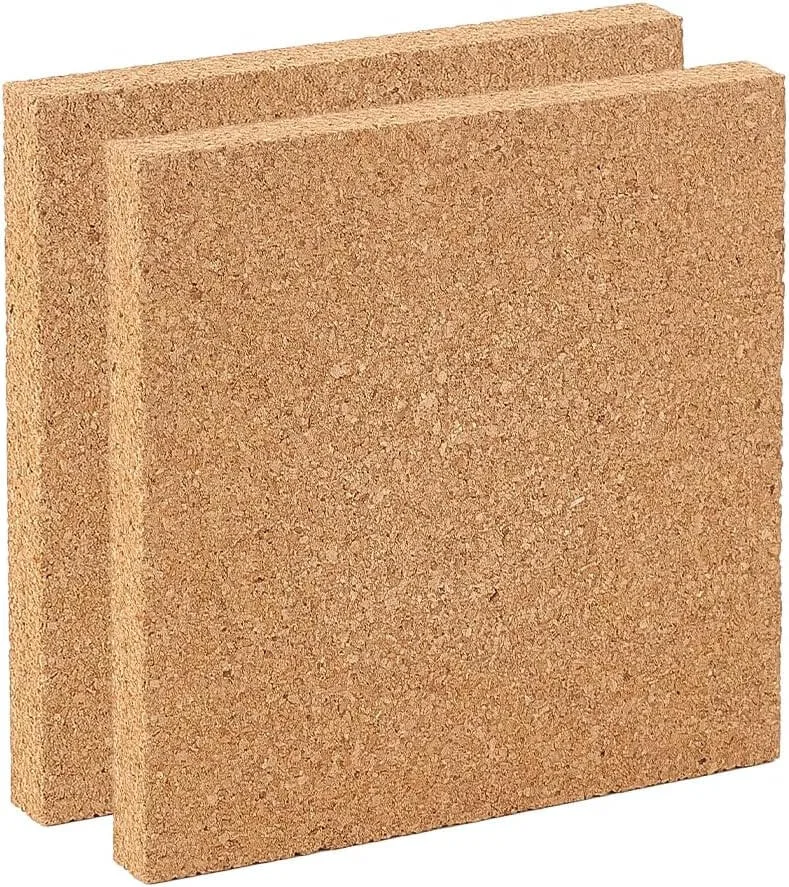
Коли мова йде про текстури, пробка є основним матеріалом для додавання цього земляного, тактильна якість до архітектурних моделей. Він легкий, Легко вирізати, і ідеально підходить для додавання природної естетики вашому дизайну. Незалежно від того, чи створюєте ви підлоги або базові шари, пробка надає вашій моделі трохи цього я не знаю що. Це чудовий матеріал для створення реалістичного ґрунтового покриву, тема, яку ми розглядаємо Секрети реалістичного ландшафтного дизайну.
- Переваги: Легкий, забезпечує унікальну текстуру поверхні, і легко ріжеться.
- Недоліки: Можна легко пошкодити (пофарбований, порваний, або подрібнений) і вимагає ретельної обробки.
- Найкраще використання: Підлогове покриття або фактурні поверхні, природна обробка або деталі ландшафтного дизайну, і базові шари для додаткової деталізації.
Сучасні матеріали: The New Kids on the Block
Пінопластова дошка: Легкий & Готовий до всього
Пінопластова дошка є основним продуктом у створенні архітектурних моделей, особливо коли потрібно створити масштабний контекстні моделі або масування навч швидко. Це світло, Легко вирізати, і пропонує чисті, гострі краї, які зроблять вашу модель чіткою та професійною. Незалежно від того, чи працюєте ви над фонові моделі або a аналіз сайту, пінопласт – це швидкий спосіб втілити своє бачення в життя.
- Переваги: Швидко працювати, стабільний і міцний для своєї ваги, і створює чисті краї.
- Недоліки: Може бути крихким, якщо поводитися не обережно, і чутливі до змін навколишнього середовища.
- Найкраще використання: Широкомасштабні контекстні моделі, дослідження дизайну на ранній стадії, і фонові моделі для більш детальних презентацій.
Акрил (Оргскла): Прозора досконалість
Якщо ви шукаєте a гладкий, сучасний матеріал, який додає вашій моделі прозорості та світла, акрил це шлях. Це ясно, пластиковий матеріал ідеально підходить для зображення скляні фасади, вікна, або інші прозорі архітектурні елементи. Плюс, його глянцева поверхня чудово відбиває світло, додавання нотки розкіш до будь-якої моделі, особливо в поєднанні з продуманим дизайном з нашого посібника на Стратегічне використання освітлення.
- Переваги: Прозорий, універсальний для різання та формування, і забезпечує сучасну естетику.
- Недоліки: Для правильного різання потрібна точність, її можна легко подряпати.
- Найкраще використання: Скляні елементи (вікна, двері), гладка обробка для сучасного дизайну, і декоративні елементи, які повинні взаємодіяти зі світлом.
пластик: Доступна ціна & Функціональний
пластик є одним із найбільш доступний і універсальний матеріали для архітектурних моделей. Незалежно від того, чи будуєте ви Топографічні моделі або ландшафтні елементи, пластик забезпечує гнучкість, не розбиваючи гроші. Він легкий, міцний, і легко маніпулювати, що робить його улюбленим для масштабних проектів, які потребують швидкого, економічно ефективні рішення.
- Переваги: Легкий, доступний для великих проектів, і універсальний для формування та різання.
- Недоліки: Може знадобитися нанесення шарів для досягнення певної висоти, і може виглядати менш полірованим, якщо використовувати його не обережно.
- Найкраще використання: Топографічні моделі, елементи ландшафту, такі як пагорби та дороги, і більше, прості моделі, які мають бути економічно ефективними.
смола: Найкращі деталі
Для тих, хто прагне досягти складні деталі, смола це секретний соус. Цей матеріал чудово повторює тонкі текстури, створення реалістичного пейзаж, і навіть крафт статуетки або водні особливості. Тоді як смола може бути дорожчою та трудомісткішою для роботи, результати варті зусиль, особливо якщо створено з точністю 3D-друку SLA.
- Переваги: Чудово підходить для зйомки дрібних деталей і текстур, налаштовується практично для будь-якої форми, і міцний після встановлення.
- Недоліки: Може бути дорогим, особливо для великих моделей, і займає багато часу в роботі.
- Найкраще використання: Дрібні деталі та текстури, водні особливості, ландшафт, і створення реалістичних моделей для презентацій високого класу.
Метал (Алюміній, Мідь, сталь): Міцність зустрічається зі стилем
Коли вам потрібно сила і витонченість, метал доставляє. Такі матеріали алюміній, мідь, і сталь ідеально підходять для Структурні деталі, армування, або представлення високоякісної обробки. Ці метали додають а полірований, промисловий відчуття до будь-якої моделі, що робить їх ідеальними для сучасного дизайну, надійна естетика.
- Переваги: Міцний і стійкий, пластичний для формування, і забезпечує високий клас, поліроване покриття.
- Недоліки: Потрібні спеціальні інструменти та навички для роботи та можуть бути дорогими.
- Найкраще використання: Конструкційне посилення, деталізована високоякісна обробка, і архітектурні елементи, такі як рами, колони, і балок.
Цей комплексний погляд на матеріали забезпечує різноманітність, необхідну для кожного проекту. Правильний матеріал може покращити ваш дизайн, роблячи його більш деталізованим, міцний, і візуально приголомшливий. Незалежно від того, маєте ви обмежений бюджет чи прагнете досконалості, розуміння сильних і слабких сторін кожного матеріалу гарантує, що ваша архітектурна модель справляє враження.
Екологічно чисті та довговічні матеріали для архітектурних моделей
Біорозкладані матеріали: Зелений — новий чорний
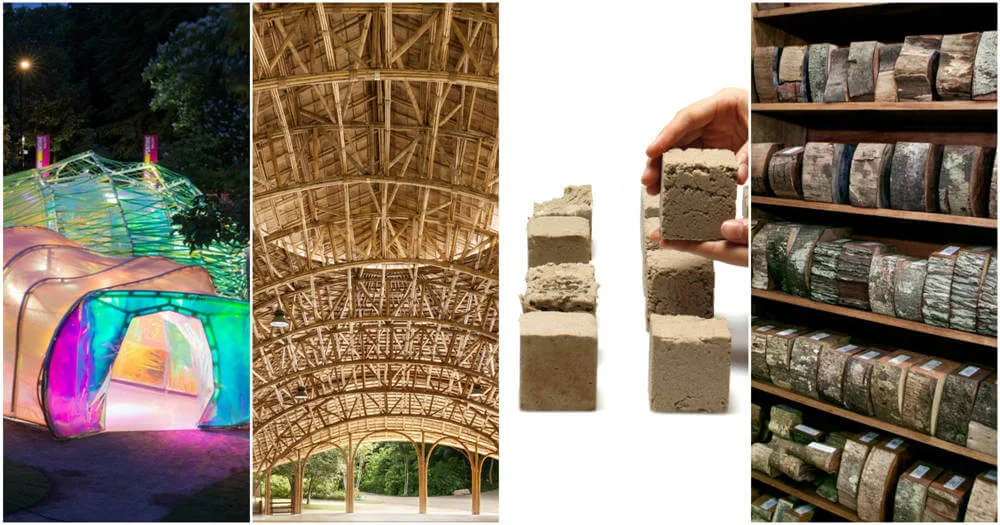
Стійкість — це не просто модне слово, це майбутнє архітектури. Як світ стає зеленішим, так само і те, як ми створюємо архітектурні моделі. Введіть біологічно розкладаються— екологічно чисті герої, завдяки яким традиційні матеріали виглядають трохи… старомодний. Ці матеріали корисні не лише для планети, вони також можуть доставити приголомшливі результати у ваших моделях, і все це одночасно зменшує ваш вплив на навколишнє середовище.
- Приклади: Перероблений пластик, пінки на рослинній основі (з кукурудзяного крохмалю або міцелію грибів), і біорозкладні смоли.
- Переваги: Екологічно чистий, зменшує відходи, і відповідає практикам зеленого будівництва.
- Недоліки: Може не завжди бути таким міцним або довговічним, як традиційні матеріали, і може не мати витонченого вигляду для презентаційних моделей високого класу.
- Найкраще використання: Проекти, орієнтовані на стійкий розвиток і концептуальні чи екологічні моделі.
Перероблені матеріали: Коло життя (Для матеріалів)
Якщо ви не любите біологічно розкладаються, завжди є надійний запасний варіант: перероблені матеріали. Ці матеріали є справжні переробники архітектурного світу, взяти щось старе і дати йому нове життя. Перероблений папір, картон, і пластмаса не просто корисні для навколишнього середовища — вони також універсальні та напрочуд ефективні під час створення концептуальний і структурний моделі.
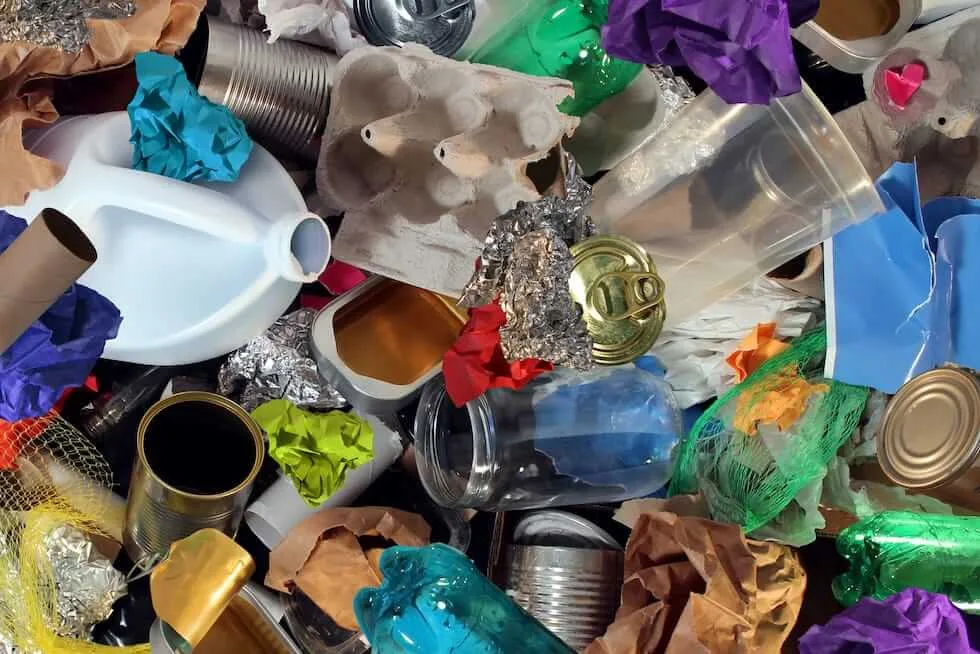
- Приклади: Перероблений папір/картон і перероблений пластик.
- Переваги: Стійкий, зменшує відходи, і надсилає потужне повідомлення про екологічний дизайн.
- Найкраще використання: Маломасштабні концептуальні моделі та екологічно чутливі проекти.
| Тип матеріалу | Приклади | Переваги | Найкраще використання |
|---|---|---|---|
| Біорозкладані матеріали | Перероблений пластик, пінки на рослинній основі, біорозкладні смоли | Екологічно чистий, зменшує відходи, відповідає практикам зеленого будівництва | Проекти, спрямовані на екологічну стійкість |
| Перероблені матеріали | Перероблений папір/картон, перероблена пластмаса | Стійкий, зменшує відходи, екологічний дизайн | Малогабаритні моделі, екологічно чутливі проекти |
Шляхом інкорпорації біологічно розкладається і перероблені матеріали, архітектори та дизайнери можуть відстоювати екологічність, створюючи ефективні та естетично привабливі моделі. Ці матеріали доводять, що позитивний вплив на навколишнє середовище не означає шкоди якості чи креативності.
Спеціалізовані матеріали для детальних архітектурних моделей
скло: Найкраща прозорість
Якщо ви прагнете точність і реалізм, потім скло має бути у верхній частині вашого списку матеріалів. Цей матеріал призначений не лише для вікон у реальному світі — це найкращий вибір для створення прозорі функції і скляні фасади в архітектурних моделях. Хочете, щоб ваша будівля виглядала так, ніби вона виблискує під сонцем або виблискує під штучним освітленням? Скло - це ваш квиток відбиває світло і демонструючи прозорість.
- Переваги: Неперевершена чіткість і реалістичність.
- Недоліки: Тендітний і вимагає акуратності, спеціальні техніки різання.
- Найкраще використання: Скляні фасади, вікна, двері, і гладкий, сучасні будівлі.
Синтетичні тканини: Тканина природи

Іноді, вам потрібно підняти свою модель на новий рівень за допомогою деяких реалістична текстура. Введіть синтетичні тканини, неоспівані герої, коли справа доходить до додавання Пейзажні особливості і текстури місцевості. Незалежно від того, чи це для пагорбів, фактурні поверхні, або мерехтлива водойма, синтетичні тканини допомагають оживити оточення вашої моделі гнучкість і деталь.
- Переваги: Може повторити м'який, органічні текстури реалістичні та гнучкі для формування.
- Недоліки: Може бути важко встановити та приклеїти в тісних місцях.
- Найкраще використання: Об’єкти ландшафту, як-от трава чи поля, імітація водойм, та створення інших природних ландшафтів.
Фотолюмінесцентні матеріали: Світиться в темряві? Так, Будь ласка.
Завжди хотів, щоб твоя модель блиск— буквально? Ось де фотолюмінесцентні матеріали вступати в гру. Ці матеріали поглинають світло, а потім випускають його у вигляді м’якого світіння, коли світло гасне. Вони ідеально підходять для творчості драматичні світлові ефекти або підкреслюючи особливості вашої моделі, як шляхи аварійного виходу або системи освітлення. Вони є ключовим компонентом майбутнього, як описано в нашому посібнику Інтерактивна техніка та АР.
- Переваги: Створює драматичний, унікальний “вау” фактор і підсвічує елементи в темряві.
- Недоліки: Може бути дорогим і не практичним для всіх проектів.
- Найкраще використання: Підсвічування систем освітлення або аварійних виходів, створення унікальних нічних візуальних ефектів, та створення інтерактивних моделей.
| Тип матеріалу | Приклади | Переваги | Найкраще використання |
|---|---|---|---|
| скло | Прозорі елементи, скляні фасади | Ясність, реалізм, світловідбиваючі властивості | Вікна, фасадів, сучасні архітектурні особливості |
| Синтетичні тканини | Пейзажні тканини, водойм, фактурні поверхні | Реалістичні текстури, гнучкість | Моделювання рельєфу, Пейзажні особливості, водні особливості |
| Фотолюмінесцентні матеріали | Фарби та пластики, що світяться в темряві | Драматичні ефекти, унікальне освітлення, інтерактивний | Системи освітлення, запасні виходи, нічні візуальні ефекти |
Включення спеціалізовані матеріали додає глибина, реалізм, і візуальна інтрига. Незалежно від того, чи прагнете ви сучасна елегантність з гладкими скляними фасадами або a драматичне сяйво, ці матеріали покращують ваш дизайн і допомагають розповісти більш динамічну історію. З потрібними інструментами та трохи креативності, ваші моделі не просто будуть точними, вони будуть надзвичайний.
Вибір правильного матеріалу для вашої архітектурної моделі
Тип конструкції: Пристосування вашого матеріалу до мети моделі
Вибір ідеального матеріалу для вашої архітектурної моделі полягає не лише у виборі того, що добре виглядає, а й у відповідності матеріалу до мета моделі. Думайте про це як про вибір правильної пари взуття для події: Ви не вдягнете шльопанці на вечірку в стилі «чорна краватка»., і ви б не носили туфлі в поході (якщо ви не якийсь модний авантюрист). Те ж саме стосується і архітектурних моделей.
для концептуальне тестування, швидкість і гнучкість є ключовими. Вам потрібні матеріали, які дозволяють швидко досліджувати ідеї, тестові форми, і повторити. Паперовий, картон, і пінопластова дошка ваші найкращі ставки тут. Вони легкі, Легко вирізати, і досить дешево, щоб ви не відчували себе винними через те, що викинули кілька версій, перш ніж вибрати потрібну.
Коли настав час стати серйозним, і модель прямує до презентація або залучення клієнтів, ваш вибір матеріалів має бути більш витонченим. для моделі з високою деталізацією які будуть використані, щоб справити враження на інвесторів або зацікавлених сторін, матеріали, як деревина, акрил, і смола є ідеальними. Ці матеріали не тільки виглядають більш витонченими, але вони також забезпечують a чистіше покриття і структурна цілісність. Клієнти очікують витонченість і точність на цьому етапі, тому матеріал повинен це відображати.
Практичні міркування: Логістика вибору матеріалів
Ми всі любимо гарний дизайнерський виклик, але будьмо правдивими-практичність відіграє важливу роль у виборі матеріалу. Довговічність, вартість, простота використання, і наявність повинні бути вашими дороговказними зірками. Адже, немає сенсу вибирати найхимерніший матеріал якщо це занадто дорого або важко працювати.
- Довговічність: Наскільки добре матеріал тримається? Чи витримає випробування часом, або він крихкий і схильний до пошкоджень? Для довгострокових проектів, деревина, акрил, і метал є сильними суперниками. Для швидких прототипів або Концептуальні моделі, матеріали, як картон і піна може добре працювати, але вони не триватимуть вічно.
- Вартість: Бюджет відіграє головну роль. Якщо ви працюєте з обмежені ресурси, вибирайте рентабельні матеріали, які не жертвують якістю. Картон, пінопластова дошка, і перероблені матеріали може дати вам багато вигоди за ваші гроші.
- Простота використання: Працювати з деякими матеріалами легко, а для інших потрібні спеціальні інструменти та навички. Пінопластова дошка? легко. Акрил або метал? Не дуже, якщо у вас є лазерний різак і певний досвід точне різання.
- Доступність: Переконайтеся, що ви можете легко отримати необхідні матеріали. Якщо ви поспішаєте, похід до місцевого господарського магазину чи магазину товарів для мистецтва картон і пінопластова дошка це набагато легше, ніж пошук спеціальності смола або метал.
Навички та інструменти: Складність додає ще один рівень
Не секрет, що одні матеріали складніші в роботі, ніж інші. Подібно до того, як для деяких рецептів потрібна машина Sous-Vide дрібку вишуканої солі, з іншими добре локшина швидкого приготування. Якщо ви працюєте з простим дизайном і у вас є стислі терміни, складність матеріалу не матиме великого значення. Але якщо ви занурюєтесь у щось більше заплутаний, Будьте готові показати велику зброю або принаймні відповідні інструменти.
Для деяких матеріалів потрібні спеціальні інструменти, і якщо ви не маєте до них доступу, Ви можете розчаруватися (і, можливо, з кількома неправильними порізами). Акрил і деревина можна мріяти працювати, якщо у вас є доступ лазерні різаки або точні пилки, але без цих інструментів, вони можуть швидко стати кошмаром. Такі матеріали піна або картон? З ними легко працювати простими ручними ножами та ножицями — не потрібні спеціальні інструменти.
Чим складніший матеріал, чим більше часу і навичка вам знадобиться. Так, бути чесним із собою: Чи готові ви до виклику?? Чи є у вас необхідні інструменти? Якщо ви не впевнені, можливо, краще піти з чимось простіше і більше прощає.
Налаштування клієнта: Зелений або чистий?
Не кожен клієнт орієнтується виключно на естетику. Деякі можуть мати a специфічна філософія вони хочуть узгодити з, і матеріали тут можуть зіграти велику роль. Для екологічно свідомих клієнтів, стійкий і перероблені матеріали є пріоритетними. Для інших, вони можуть прагнути певного погляду, скажімо, a гладка сучасна обробка або a сільський, природне відчуття.
- Екологічно чисті матеріали: Якщо стійкість є пріоритетом, подумати про включення біологічно розкладаються, перероблений папір, деревина, або навіть пінки на рослинній основі. Вони ідеально підходять для клієнтів, які хочуть, щоб їхній дизайн узгоджувався з ними практики зеленого будівництва та піклування про навколишнє середовище.
- Естетичні уподобання: Деякі клієнти можуть віддавати перевагу певній естетиці матеріалу, незалежно від того, чи їм подобається високоякісна обробка як акрил і метал, або вони хочуть чогось, що відчуває земляний і автентичний як деревина або пробка. Розуміння їх стилю допоможе визначитися з вибором матеріалу.
| Розгляд | Про що слід пам’ятати | Ідеальні матеріали |
|---|---|---|
| Тип конструкції | Виберіть матеріали, які відповідають сцені — концептуальні, робочий, або презентація. | Концептуальний: Пінопластова дошка, картон; Презентація: Деревина, акрил, смола |
| Практичні міркування | Довговічність, вартість, простота використання, і наявність мають значення у виборі матеріалу. | Бюджетний: Картон, піна; Довговічний: Деревина, акрил, метал |
| Навички та інструменти | Матеріали вимагають різних інструментів і навичок — будьте чесними щодо своїх можливостей. | Простий у використанні: Пінопластова дошка, картон; Комплекс: Акрил, деревина, метал |
| Налаштування клієнта | Розглянемо екологічно свідомий дизайн або конкретні переваги матеріалів. | Екологічно чистий: Перероблені матеріали, біорозкладні варіанти; Естетичний: Акрил, деревина |
Вибір правильний матеріал для вашої архітектурної моделі не можна легковажити. Йдеться про пошук ідеального балансу між вашими цілі проектування, бюджет, і доступні інструменти. Трохи подумавши, ви матимете ідеальний матеріал для свого проекту — будь то швидка концептуальна модель чи приголомшлива презентація, яка вразить ваших клієнтів. Так, обирайте мудро, і запам'ятайте, обраний вами матеріал так само важливий, як і сам дизайн!
Поради щодо роботи з матеріалами архітектурної моделі
Обробка матеріалів: Точне створення вашої моделі
Коли мова йде про Архітектурна модель, правильно поводитися з матеріалами половина справи. Незалежно від того, чи ви ріжете, склеювання, або обробка, кожен матеріал має свої особливості, і володіння ними – це те, що відрізняє аматорів від професіоналів. Подумайте про це, як про випікання торта — ви не можете просто кинути інгредієнти разом і сподіватися на краще. Вам потрібні правильні техніки, інструменти, і трохи вишуканості.
Розкрійні матеріали:
Коли справа доходить до різання, точність є ключовою. Ви ж не хочете мати нерівні краї на чистому дизайні. Для паперу, картон, і пінопласт, a гострий канцелярський ніж твій найкращий друг. Якщо ви працюєте з більш товстими матеріалами, як-от дерево, тобі захочеться чогось сильнішого —ручні пилки, лобзики, або навіть a лазерний різак для надтонких надрізів. Завжди вимірювайте двічі, вирізати один раз! І не забувайте про безпеку — використовуйте стійку ріжучу поверхню (як килимок для різання) щоб захистити як ваші матеріали, так і робочу поверхню.
Склеювальні матеріали:
Що стосується склеювання матеріалів, правий клей може зробити або зламати вашу модель. Клей для дерева творить чудеса для деревина і бальза проекти, в той час пінобезпечний клей це ваш вибір для будь-чого на основі піни. Будьте обережні з суперклеєм — він швидкий і міцний, але якщо ви не обережні, це може створити безлад. Акриловий цемент є обов’язковим для акрилу — цей клей тане краї злегка, утворюючи міцний зв’язок, який виглядає майже безшовним.
Завершення вашої моделі:
Після всього цього різання та склеювання, вам потрібно переконатися, що ваша модель має a чистий, поліроване покриття. Для деревини, шліфування є ключовим для згладжування шорстких країв. Акрил можна відполірувати м’якою тканиною або спеціальна полірувальна суміш для цього блискучого, професійний вигляд. Запам'ятати: трохи проходить довгий шлях, тому будьте обережні, щоб не переборщити — інакше, ви відшліфуєте всю свою важку роботу.
Інструменти та обладнання: Правильні інструменти для роботи
Якщо говорити про архітектурні моделі, інструменти та обладнання може бути різницею між розчаровуючим днем помилок і гладким, успішний проект. Вам не потрібна майстерня, повна гаджетів, щоб виконати роботу, але наявність правильних інструментів значно полегшить ваше життя.
Лазерні різаки для акрилу:
Лазерні різаки є рок-зірками світу створення архітектурних моделей. Вони дозволяють стригти акрил, деревина, пластиковий, і навіть тонкий метал з точністю. Ці машини використовують лазер, щоб досягти досконалості, гладкі зрізи, зменшення ймовірності недосконалості. Якщо ви працюєте над детальним Презентаційна модель, лазерний різак допоможе створити тонкий, чіткі деталі з легкістю.
Різаки пінопласту для пінопласту:
Для швидкого, чисті врізки пінопластова дошка або полістирол, a різак для пінопласту це ваш улюблений інструмент. Ці інструменти використовують нагрітий дріт, щоб прорізати піну, як гарячий ніж масло. Це швидко, чистий, і він не залишить вас з купою дрібних пінопластових крихт. Тільки не забудьте працювати в добре провітрюваному приміщенні — палена піна не зовсім приємна.
Крафтові ножі для паперу та картону:
для папір, картон, і ДСП, a крафтовий ніж твій найкращий друг. Це дешево, надійний, і легко контролювати для складних вирізів. Обов’язково використовуйте свіже лезо, щоб уникнути його затуплення, рвані краї—зрештою, якість обробки вашої моделі залежить від інструментів, які ви використовуєте.
Лінійки, Шаблони, і скальпелі:
Ріжете ви чи вимірюєте, точність є ключовою. Хороший металева лінійка забезпечить прямі зрізи, в той час шаблони допомогти вам отримати послідовні форми кожного разу. для детальні розрізи або складні конструкції, a скальпель забезпечує більшу точність, ніж звичайний ручний ніж.
Поширених помилок, яких слід уникати: Вчіться у професіоналів (і невдачі)
Під час моделювання можуть помилитися навіть досвідчені професіонали. Але з невеликим ноу-хау, ви можете уникнути помилок новачків, які перетворюють хорошу модель на катастрофу. Ось деякі поширені підводні камені стежити за:
Нерівні зрізи:
Якщо ваші зрізи нерівні, вся модель може почати виглядати неохайно. Незалежно від того, чи ви рубаєте дрова, піна, або акрил, відміряти двічі, вирізати один раз. І не поспішайте — точність важливіша за швидкість. Хороший, чистий крій означає, що ваші деталі ідеально поєднуватимуться один з одним, заощаджуючи ваш час і розчарування в довгостроковій перспективі.
Використання невідповідного клею:
Не всі клеї однакові. Використання неправильного клею може спричинити непривабливі позначки, слабкі зв'язки, або липкі безладдя. Наприклад, використання PVA клей на акрил може призвести до хмарності, нерівні шви. Акриловий цемент або пінобезпечний клей зробить трюк. Обов’язково прочитайте етикетку, і завжди перевіряйте клей на шматку, перш ніж приступати до всієї моделі.
Неправильний розрахунок кількості матеріалу:
Однією з найнеприємніших речей у моделюванні є брак матеріалів на півдорозі. Ви не хочете бути посеред створення свого шедевр, лише щоб зрозуміти, що вам не вистачає кількох листів пінопласту або акрилової панелі. Щоб уникнути цього, планувати наперед— зробіть вимірювання та врахуйте додатковий матеріал для врахування помилок, тестові зразки, або зміни в дизайні.
Без урахування усадки матеріалу:
Певні матеріали, як піна або пластиковий може зменшуватися або розширюватися залежно від середовища. Якщо ви склеюєте шматок і він має потенціал скорочуватися, у вас виникнуть прогалини або розбіжності, коли його буде встановлено. Завжди враховуйте ці фактори під час вимірювання та збирання моделі.
| помилка | Чого слід уникати | Як це виправити |
|---|---|---|
| Нерівні зрізи | Поспіх через порізи або використання невідповідних інструментів. | Використовуйте гострий крафтовий ніж, відміряти двічі, і повільно ріжте. |
| Неправильний клей | Використання невідповідного клею для матеріалів. | Вибирайте клей в залежності від типу матеріалу (Напр., акриловий цемент для акрилу). |
| Неправильний розрахунок кількості | У середині проекту закінчуються матеріали. | Плануйте заздалегідь, відміряти двічі, і придбати додаткові матеріали. |
| Усадка матеріалу | Ігнорування усадки або розширення певних матеріалів. | Враховуйте поведінку матеріалів під час проектування та складання. |
Дотримуючись цих порад, ви будете на шляху до створення архітектурних моделей, які є точні, професіонал, і міцний. Опануйте мистецтво поводження з матеріалами, використання правильних інструментів, та уникнення типових помилок, і ваші моделі виділятимуться з усіх причин. При правильній підготовці, ви перетворите цей скромний шматок піни чи акрилу на шедевр моделювання що сяє дизайном і виконанням.
Висновок: Вибір ідеальних матеріалів для ваших архітектурних моделей
Резюме: Правильний матеріал для правильної сцени
Вибір ідеальний матеріал адже ваша архітектурна модель схожа на вибір правильного взуття для марафону – ви не одягнете шльопанці під час пробіжки на 26 миль, право? Вибраний вами матеріал повинен відповідати стадії вашого проекту, а також рівень деталь, міцність, і естетична привабливість потрібно.
Для раннього Концептуальні моделі, думати світло, дешевий, і гнучкий. Паперовий, пінопластова дошка, і картон дозволяють швидко досліджувати масування, форму, і форму, не зациклюючись на деталях. Але в міру дорослішання вашого дизайну, так само має бути і ваш вибір матеріалу. Деревина, акрил, і смола ідеально підходять для робочі моделі і Презентаційні фрагменти які мають продемонструвати вишуканість вашого дизайну, додавання полірувати і точність що клієнти та зацікавлені сторони люблять бачити.
Вибір матеріалів — це не лише те, що добре виглядає на папері (каламбур), але про те, щоб вони служили мета проекту і втілюйте свої ідеї в життя найефективнішим способом. Справа не завжди у виборі найдорожчого чи модного матеріалу; мова йде про вибір правильного матеріалу для поточної роботи.
Остаточні думки: Експериментуйте, грати, і створюйте кращі моделі
Краса створення архітектурних моделей полягає в тому, що це багато про що експериментування про що йдеться точність. Не бійтеся грати з матеріалами, змішувати та поєднувати, і подивіться, як різні речовини взаємодіють із вашими дизайнерськими ідеями. Незалежно від того, чи ви досвідчений професіонал, чи тільки починаєте, Вивчення нових матеріалів може підняти ваші моделі від «хороших» до «вау».
Деякі з найкращих ідей приходять несподівано — можливо біорозкладні піни або перероблена пластмаса міг принести свіжий, стійкий дотик до вашого наступного проекту. Світ матеріали для виготовлення моделей величезний і сповнений невикористаного потенціалу. Так, чому б не зануритися в щось нове? Експериментування допоможе вам знайти правильний варіант для ваших конкретних потреб і, ймовірно, підштовхне до ще більшої творчості в процесі.
Заклик до дії: Удосконалите свій дизайн за допомогою професійної допомоги або нових матеріалів
Готові вивести ваші моделі на новий рівень? Якщо ви прагнете пригод (або просто потрібна рука експерта), завжди є можливість вивчити професіонала Послуги з виготовлення моделей. Ці послуги пропонують багаторічний досвід і високоякісні інструменти, щоб ваша модель була ідеальною.
Або, якщо ви відчуваєте себе трохи більше DIY, експериментувати з новими матеріалами. Біорозкладні смоли, 3D друковані елементи, або навіть нетрадиційні варіанти, як фотолюмінесцентні матеріали може бути саме тим, що вам потрібно, щоб розширити межі того, що можливо у створенні архітектурних моделей. Забруднити руки, проявити творчість, і виведіть свій дизайнерський вираз на нові висоти!
Вибір правильний матеріал це не універсальний підхід, а про підбір матеріалу до проекту етап, мета, і естетичні потреби. Незалежно від того, чи граєте ви з концептуальним дизайном, чи налаштовуєте модель презентації, правильний матеріал може змінити все. Експериментуйте, досліджувати, і нехай ваші матеріали допоможуть вам втілити ваше архітектурне бачення в життя.
Поширення: Усе, що вам потрібно знати про матеріали для архітектурних моделей
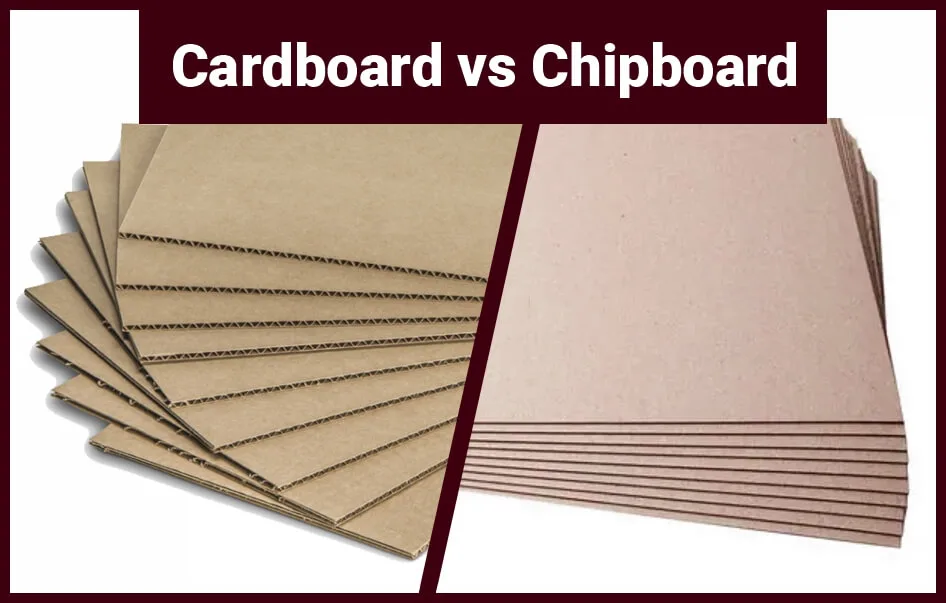
Які найкращі матеріали для архітектурних моделей?
Найкращі матеріали для архітектурних моделей залежать від мета моделі та стадії процесу проектування. для Концептуальні моделі, матеріали, як пінопластова дошка, картон, і папір ідеальні, тому що вони економічно ефективним, легко маніпулювати, і швидко працювати. Коли ви переходите до більшого детальні або презентаційні моделі, ви захочете оновити до таких матеріалів, як акрил, деревина, і смола, які пропонують більше уточнення, міцність, і точність. Якщо ваша модель відповідає всім вимогам реалізм і сучасна обробка, метал і скло має бути у вашому списку.
для екологічно свідомі проекти, біологічно розкладаються, перероблена пластмаса, і пінки на рослинній основі стають все більш популярними. Ці матеріали не тільки зменшують вплив на навколишнє середовище, але й додають унікальний штрих до ваших моделей, демонструючи вашу прихильність до сталого розвитку.
Як вибрати матеріали для архітектурних моделей?
Вибір правильного матеріалу для вашої архітектурної моделі схожий на правильний вибір інструмент для роботи — кожен матеріал має своє призначення, і знати, що вам потрібно, це півсправи. Ось ключові фактори розглянути:
- Стадія проекту: Якщо ви перебуваєте в рання концептуальна фаза, піти на гнучкий, дешеві матеріали як картон і піна. Коли конструкція дозріє, висока деталізація матеріали, як акрил і деревина буде більш доречним.
- Бюджет: Матеріальні витрати сильно відрізняються, тому враховуйте своє бюджетні обмеження. Ви ж не хочете зірвати гроші на моделі, призначеній лише для внутрішнього тестування.
- Часові обмеження: Якщо у вас щільний графік, використовуйте матеріали, з якими швидко і легко працювати, як пінопластова дошка або картон. Для більш складних моделей, матеріали, як акрил або деревина вимагають більше часу та зусиль.
- Намір дизайну: Подумайте, що повинна передати ваша модель. Якщо ви хочете продемонструвати сучасний або витончена естетика, акрил і метал є вашими основними матеріалами. для сільський або природний конструкції, деревина і пробка буде творити чудеса.
Які матеріали використовуються в архітектурних моделях для презентації?
Коли вам потрібна така модель вражає клієнти, зацікавлені сторони, або інвестори, вибір матеріалу стає вирішальним. Попит на презентаційні моделі висока точність, чиста обробка, і вміння виділяти ключові конструктивні особливості.
- Акрил: Ідеально підходить для прозорих елементів, таких як вікна та фасади, акрил пропонує а гладкий, полірований вигляд що надає вашій моделі сучасного вигляду.
- Деревина: Бассуд і бальзове дерево легкі, але міцні, ідеально підходить для створення складні деталі наприклад обрамлення, двері, і вікна.
- смола: Для додавання дрібна деталізація як фігурки, ландшафт, або навіть водні особливості, смола дозволяє висока точність і налаштування.
- Метал: Для моделей, які потребують доп сила або для відображення більше промисловий вигляд, метали, як алюміній або сталь ідеально підходять для структурних елементів і високоякісної обробки.
- Пінопластова дошка: Для великих, основні контекстні моделі або масових досліджень, пінопластова дошка є економічно ефективним і простим у роботі.
Вибраний вами матеріал має підняти ваш дизайн, роблячи це виділятися і говорити багато тим, хто його переглядає.
Які екологічно чисті матеріали можна використовувати для архітектурних моделей?
Екологічність — це вже не просто тренд, це необхідність. На щастя, є зростаючий діапазон Екологічно чисті матеріали які ідеально підходять для створення архітектурних моделей. Ці матеріали не тільки зменшують ваш вуглецевий слід, але й можуть надати a унікальна естетика за вашим дизайном.
- Біорозкладані матеріали: Варіанти як пінки на рослинній основі і біорозкладні смоли забезпечити стійкі альтернативи традиційним пластмасам, і вони все ще доставляють деталь і точність необхідні для якісних моделей.
- Перероблений пластик: За допомогою перероблена пластмаса, ви даєте старим матеріалам друге життя, одночасно зберігаючи міцність і сила необхідні для структурних елементів у ваших моделях.
- Перероблений папір/картон: Ці матеріали широко доступні, економічно ефективним, і ідеально підходить для концептуальних або невеликих моделей. Вибираючи перероблений папір або картон, ви можете залишатися вірними принципам сталого розвитку без компромісів якість моделі.
- Перероблена деревина: Для тих, хто хоче додати природності, залишаючись екологічно свідомим, перероблена деревина це чудовий варіант. Це забезпечує те саме теплота і текстура як нове дерево, але без впливу на навколишнє середовище вирубування дерев.
Вибір цих екологічно чистих матеріалів допоможе вам привернути увагу цілі сталого розвитку у центрі уваги, продовжуючи виробництво детальний, високоякісні моделі.


